First Shunned By Neighbors, Then The Bars: Being Black In New Orleans In The 1960s and 1970s.
Well, I was born to Sadie and Charlie Hickerson. We lived in an area of New Orleans called Central City. Central City was – is an African-American community. Very, very poor community, but we were all very loving and very – a very loving and very happy community. It was a wonderful place to grow up in. That’s where I grew up, until the age of 12.
When I graduated from sixth grade, my parents moved. Took us from the ghetto and moved us uptown. Moved us uptown to a community that we really did not know. The community was totally white.
We settled in, about a week or two, you know, and then the strangest thing happened. All of these “For Sale” signs started popping up all around the neighborhood, especially the block in which we lived in, on the street we lived in. All these “For Sale” signs started popping up. Well, we were kids. We knew absolutely nothing about what was going on, you know, and I really – I really did not understand that until much later in my life, that this was a racial thing.
And then they got to know us. They got to know us and things changed in the community. Eventually over the years and stuff, it became one big community, with the black family.
The word “gay” came along much later in my life. I always knew I was a sissy. I always knew… that was the name that was called to you when you were a kid in African-American communities if you were a sissy. And, you know, growing up back in the 60s, in my era, those are things that you kept a secret.
And I ran across a magazine that my neighbor, the white guy that lived next door to me, put in his trash.. And there were all these magazines, and in all the magazines was this word “gay.”
So, I started putting two and two together, and I realized he was gay. I realized that the man next door to me was gay. You know, after reading the magazines and seeing what happens at his house, and who comes and who goes, and all that kind of stuff, you know, and I realized he was.
But, you know, looking at these magazines from his trash taught me a lot. It taught me that there are places for people like me in the city, in New Orleans. So, you know, through those magazines, I found some addresses and I ventured out. I found places where gay people hung out at. I found bars and stuff, you know. Bars that – some of them still exist now.
When I finally got enough nerve to go into that gay bar. I finally got enough nerve to go up, and I discovered it, I found it, I dressed up, I got pretty, and I finally got enough nerve to walk in it. When I walked into it, I began to feel – experience that same thing again. It was a period of time when blacks… when the gay bars and the gay community was predominately white. And I began to experience the same thing, you know, being last to be served at the bar when you’re sitting up at the bar and all the white guys and stuff getting their drinks and stuff before you. For me, it translated back to the “For Sale” signs. It translated right back to that. I began to feel that same isolation that, you know, that I felt when I was 12 years old.
I never stopped going. I endured it. I would sit there, by myself. Then I eventually got to meet the bartenders, and they got to know me.
It’s important that you hear a lot of this stuff from a black perspective. It’s an experience, it’s an adventure, it’s a journey. Sometimes crippling, but you get up, you dust yourself off, and you fight on.
1970s: Combatting Racism In The New Orleans Gay Bar Scene.
Back then, and like I think now, bartenders control the space. Lots of blacks could not come in. And how they stopped it, how they controlled it I should say, is through identifications. They – rather than have one identification, Louisiana identification card that said who you are, they had to have four. and they knew most African-Americans didn’t have it, while our white counterparts didn’t need anything to get in. All they needed to do was be white to get in. It happened like that.
I saw the injustice. I saw it because I was able to get in. They knew me. I had made friends with them, I was able to get in and stuff, you know. And I saw it. I used them knowing me to get my friends in. “They’re with me, they’re with me, they’re with me, they’re with me, and they’re with me.” And eventually, they met them and then they were able to start coming in.
But during that period of time, we had a little protest. We had a little protest around the bars about these carding African-Americans. We held signs and we marched around the bars, and stuff like that. “No three IDs,” or something like that. “One ID.” “Why me?” Something like that. And it wasn’t that big, but it was effective, it was effective.
It’s very difficult to be, back then, to be an African-American man and live in this gay society, because it’s so white. We’re coming into a society, or a community, however you want to describe it, that’s already there. And it still exists, just not quite as much as it did back then, but there is a whole lot of prejudice within the gay community. And it’s not only racial, it’s economic, it’s all these kind of things, it’s education.
So, I say to the African-American community, especially to the young gay folk that are coming up, I say, “We have laid the foundation on which you all could build on. Just take it and keep moving forward. Keep going. Don’t let this or that discourage you. There is a rainbow at the end of that tunnel, there is, and you’re going to realize the joy. While it’s – while sometimes you can suffer, you’re going to realize the joy once you get there. And you can get there. Just keep moving forward.
1980s: Challenging The Racism In New Orleans’ Infamous Gay Mardi Gras Krewes: “I Did Realize That There Were No Blacks.”
When I was in 12th grade, in 1973, I worked at the Municipal Auditorium. It was a venue where all the concerts, all the Mardi Gras Balls, and all of this kind of society stuff was held.
I saw these men having this, what is now, Mardi Gras Ball, but I didn’t know they were men. They were these women in beautiful dresses and feathers, and all of this kind of stuff, having this thing where they promenaded around the floor, and they bowed, and they did this, and they did that, and it just so elegant. And I had never seen anything like that in my life. I was just fascinated.
Then I realized that it was men doing this. “Oh my god.” I heard the names. It was the Krewe of Apollo. I heard the names. I was like 17 – 16 to 17 years old, and I thought, “Ooh, I want to do that. I want to do that.”
Fast forward, during my times in the bars and coming out, and stuff, the name Apollo popped up again. Then I met some people who were a part of the Krewe of Apollo, and I explained to them, when I was a kid, what I had seen, and they remembered the ball. Then I got invited to some of these balls and stuff. But back then, I do – I did realize that there were no blacks, and I respected it. It was what it was. I mean, I was a young kid that knew absolutely nothing and I took it for what it was.
Then I heard about a Krewe called The Krewe of Celestial Nights, and The Krewe of Celestial Nights had two black guys in it, and I thought, “Wow.” I did some talking and researching and talking in the bars, and stuff, and realized that the Krewe met, you know, a lot of the members hung out at this bar and stuff, and I went to that bar, and I tried to schmooze up to them, and stuff like that. And I was successful! Yes! I joined the Krewe.
I got into the organization and I – I thought that… I thought that, “Hmmm, I want to do more.” But, I had not gotten there yet, and I couldn’t wait to get there. So I understood a little of it and I got out – got out of the organization, and I tried to start one for blacks. It was called The Krewe of Somnus, the God of Sleep. Yeah, it was called The Krewe of Somnus. But it never took off.
A lot of the African-American community wasn’t impressed with it. It was too expensive for them, their ideas and their thoughts and stuff were somewhere else. It wasn’t there and stuff, you know. So, that didn’t take off. That didn’t take off. But it was very difficult back then for African-Americans to get into those organizations. Very difficult.
I joined an organization called The Krewe of Amun Ra. It was one of the biggest organizations, or Krewes, in New Orleans. I came up for membership, and they had never had a black in their organization, and some of the members did not want it. As a result, I think a third of the organization quit. Yeah, quit the organization because I was elected into the organization, I was voted into the organization.
These were people I didn’t know, except for one. One of the guys who quit was the gay guy who lived next door to us. Yes, he quit. He lived next door to us all those years, and because I joined – because a black man joined the organization, he quit. So, that just told me a whole lot about him and our relationship living next door to each other.
When I joined the organization, I was a hard worker and stuff. I enjoyed it, I wanted to be there, I wanted to contribute, I wanted to do my part, and stuff like that. I received the President’s Award, yes. I remember Len Dedros was the president that year, and I remember him giving me the President’s Award for being one of the hardest workers in the organization. I thought it was very, very, very, very nice to have that, and to be honored for the work that I contributed to the organization. But I also think that was a way of saying, “We’re sorry for what happened.”
1980s-2000s: In The Face Of HIV/AIDS, Gay Man Channels His Popularity And Expertise To Serve His Community.
In 1973, I graduated from high school and I went directly to college. But that did not – I stayed there, I stayed there for about a year and a half, you know, three semesters, and the university got tired of me not going to class, and not doing this, and not doing that, so they threw me out. And they told me, they said, “Listen, you’re young, you’re adventurous, go do what you need to do and come back later. You’re not ready yet.”
Someone offered me a job in the community. It was Cafe Lafitte’s. They offered me a job, they opened up a record store and I got the job managing their record store for them. Well, the record store sold lots of gay music, lots of music that was played in the gay bars and stuff, you know, and it was a very, very popular record store. We did well, but it gave me an opportunity to meet a lot of the gay community in that record store.
And I was this, you know, this black guy who knew lots of people in the community, and I got offered a bartending job at a bar called The Loading Zone. It was called The Loading Zone. And my popularity soared. And then along came opportunities to join, to join different organizations, to become Director of Gay Pride, and all of that kind of stuff. As a result, I tended bar for like 16 years. I became Southern Decadence Grand Marshall in 1985.
And then HIV hit. HIV hit our community. It was something that all of us did not understand. We saw people, we saw this happening, and then that happened, and then the person died. We did not understand any of this stuff. But because I was well-known in the community, I was invited to sit on the Board of Directors of an organization that was a startup organization that was providing housing for persons with HIV, called Belle Reve. I sat on their Board of Directors, their initial Board of Directors there. And I realized what they were doing, and how they were trying to impact the health and the lives of people in our community who was being infected with HIV.
After I sat on the Board, I got an opportunity to work at the organization. Here again, because of my popularity in the community, I can bring things to the organization. So, I got the job as the Volunteer Coordinator. I worked that job for about a year, but I began to realize that there were things that was happening in the, at Belle Reve that I wanted to do. But I didn’t know – I didn’t have the skills to do them. I wanted to do the social work piece of it, but I realized I didn’t have the skills to do it. So I was, I think I was like 35 years old. So I talked to my partner and we decided that I should go back to school.
I enrolled as a nontraditional student, and I enrolled nighttime, part-time, night school part-time, in pursuit of becoming a social worker. The next year, very next year I started going to school in the daytime, and I took a full load and I got through it pretty quickly. Through a Bachelor’s degree. And I got hungry, so I continued and I received a Master’s degree. And then, I was ready. I thought I was ready to move upstairs and stuff, and I did. I moved upstairs, but it wasn’t with that same agency. It was with another agency, and I did social work. I did case management for a few years with that agency.
Then, you learn things, and you learn disparities. So, I started an organization, a non-profit organization that provides services to, provided HIV services, and that would focus on the African-American community receiving those services.
The name of the organization is In This Together. And we believe, or I believe, that in order to be successful with providing services and making it work for people, you have to be in it with them. It has to be a partnership. You have to be in it together.
I’ll be 62 in September. I never thought I’d live to be 62, because I was there, I was there. All of those things that happened back then, I was there. The sex and all that kind of stuff, I was there. So many friends who I have lost to HIV/AIDS. So many. So many. Yes, so many … So what do you do? You try to live, and you try to help people live a better quality of life. You try to help them understand that you can live, and there are ways to do it.
2005: The Devastation of Hurricane Katrina: “It Just Destroyed The HIV Community.”
Katrina is like no other experience. It’s just unique in itself. As a kid, living in New Orleans and growing up in New Orleans, we’d been through storms and hurricanes, and all of those kind of things, and Katrina, on Saturday, was just another hurricane that will hit New Orleans. We will leave, and we will go to higher ground. We’ll go to, we’ll take shelter, refuge, somewhere else, and then we may be displaced for a couple days, and we’ll come back. Typical. That happens when the storm reaches a certain category: you run from it and then you come back.
Katrina was different in the sense that it broke levees. It just decimated the city of New Orleans, especially the poorer areas in the city of New Orleans. The poor areas in the city was just devastated. And it just destroyed the HIV community, services for the HIV community. These were people who were used to getting services at a certain place, who had already established how they were going to get services, where they would get them from, and who they would get them from. And it was all just set up. And to be displaced and moved to someplace where you have no idea where you are and how to start – some of these people couldn’t read, and didn’t understand any of these things.
Because where we were located, our agency didn’t sustain any damage. A lot of the other agencies did, ours didn’t, which meant a lot of people who weren’t clients of ours were now coming to our agency. So, we got some more money to provide some services. We were able to hire some more people so we could deal with the overload in clients that we would normally have had. We had a housing program, and this housing program was not only for people with HIV, this housing program was for everyone. So, we were not only getting people who are HIV-positive, we were getting just regular … people who were HIV-negative to provide services to.
We would get African-American women in with children, and they sit down and they would tell their stories, their struggles, and how they had to wade through water with their children to get out of harm’s way. It was … it was bad. You know, you’re the – you’re there, and you’re the person who they’re asking for help from, and you find yourself having to excuse yourself so you can compose yourself and go back in there and begin to deal with … help them deal with their issues, and stuff. It was… it was hard. It was, it was just hard.
And then I was dealing … My partner and I, we were dealing with our own issues, because our house had flooded. We had six feet of water in our downstairs, so we couldn’t live in our house for like six months. So, you’re dealing with that, and you’re dealing with clients’ issues, and one thing in our profession, you learn how to not bring your work home with you. You cannot. You cannot not bring it home with you. You cannot. It was just awful. It was. It was bad. It was bad.
And it looked like no one understood the devastation and the gravity of this. No one understood. You felt alone. You felt isolated. You felt like, why? Why?
Gay Man Leverages New Orleans Tradition To Bring HIV/AIDS Awareness And Education To The Community.
We talk about phobias and isms. How about the lack of education? The lack of the real knowledge that people need to understand that it’s not about who you have sex with. It’s about how you have sex with them. It’s about protection from all kind of diseases, protection from everything.
But people, I think a lot of African-Americans … well, they’re not understanding that protection keeps you negative. Because who they have sex with doesn’t matter, it’s how they have it. It’s the protection that matters. Some people… some people contract HIV however – through needles, through risky sex, and believe that because they are … people think they’re gay, and that’s the worst thing that you can be as a man in the African-American community, because of what we’re taught in the church.
If we can just get away from the… or desensitize people to the stigma, I think the rate of HIV infections in African-American community will go down. I do, I think they’ll go down. It just can’t get past that stigma.
We had, our organization, our agency partnered with an organization, a group of African-American women called The Links, the Crescent City Links, to do an HIV awareness event around HIV in the African-American community. Just to raise awareness and do education around HIV. HIV is a very difficult subject to talk about in the African-American community. “I’m not gay. It’s a gay disease. I’m not gay, I don’t need to go.” So – but we noticed that the rate of HIV infection is continuing to rise, and not only among gay men, among – it’s in the community at large.
So, we decided to come up with an HIV awareness campaign around National Black HIV/AIDS Awareness Day. The first year we did it, we decided to get some information and just go and stand on corners that are frequently passed by, or African-Americans frequently pass, stuff like that, you know, and just give out the information.
The people were very, very thankful, they were very appreciative, they were very happy. There were mothers that stopped by and said, “Oh, please give me some. I have three sons.” “Oh, give me some of that information. Now Junior, you need to …” One of those kind of things. So, that inspired us, and so we begin to think, “How can we bring more people to understand HIV?”
So, in the African-American community, we have a tradition called Second Line. Second Line is a celebration of life, and it’s done through song and dance in the streets. It usually happens after death. We celebrate someone’s life with a Second Line. The Second Line, it’s led by a traditional brass band, and there’re umbrellas and handkerchiefs, and music and dancing in the streets, celebrating the passing of someone. And while it’s a sad occasion, it’s joyous.
So, we decided that we would have a Second Line, but we would use it to raise awareness around HIV. So, we hired a brass band, one of the best brass bands in the city. Then we got some of the, two of the Second Line organizations to participate with us. The first time doing the Second Line, we got about 400 people to participate, and they were all African-American folk. We did this parade, we had a targeted area that we did it, because we knew that there was a high concentration of HIV in that area. So, we did a Second Line in that area and we targeted that area, and we just hand out pamphlets and information on, “If you know somebody, or you need to be tested, call this number.” Very gently.
And it was a huge success. It brought community folk together. They owned it. It was paid for by the community. It wasn’t paid for through a grant, or anything like that, it was paid for by the community. We got out, and we solicited donations and all the money paid for to have this done.
I’ll be 62 in September, and it’s taken a long time for me to get to be who I am today. I went through the hurt that I called racism. I went through the rejections. I went through all of those things. And I don’t mean to sound arrogant, but I am Michael. What you see is what you get. It’s like, you either take or leave it. Because I’m at that point. I’m at that point where I know who I am. I know, I now know I can walk into a room and not have to hide my sexuality or anything, not have to hide my blackness, not have to act this way, not have to act that way. I can be me, yes. It’s taken a while to get there. I’m here, and this is what you get. Yes. And I’m happy, I’m free. Yes. I do what I – I do me.
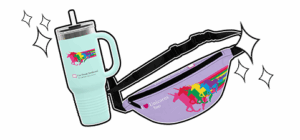

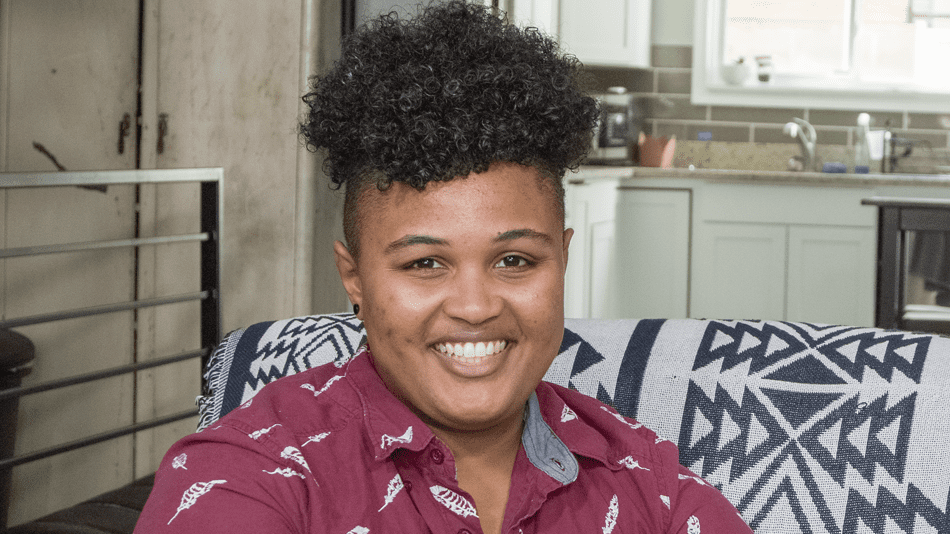

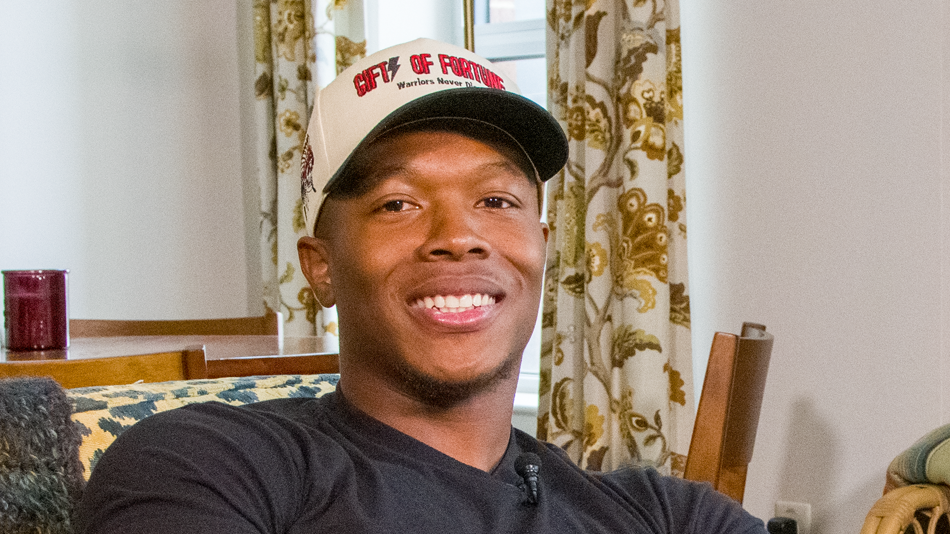
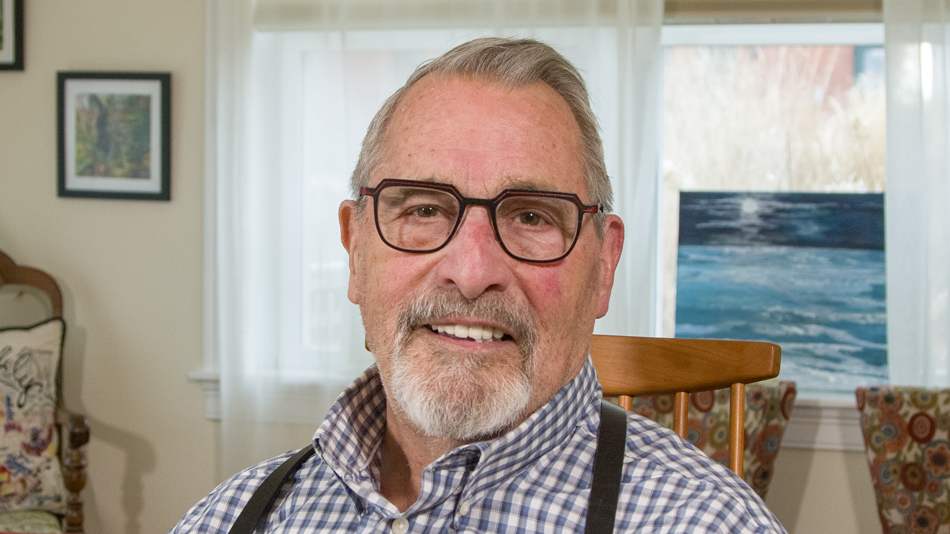
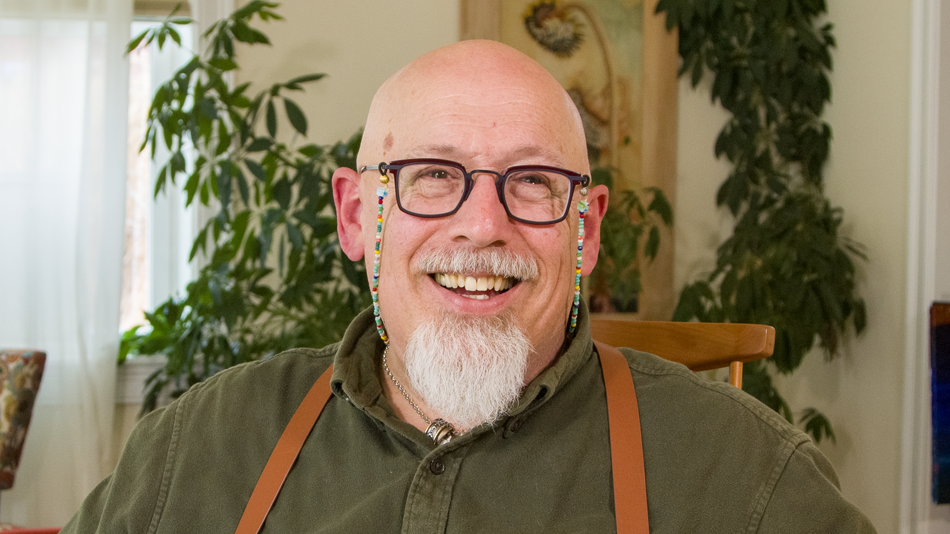
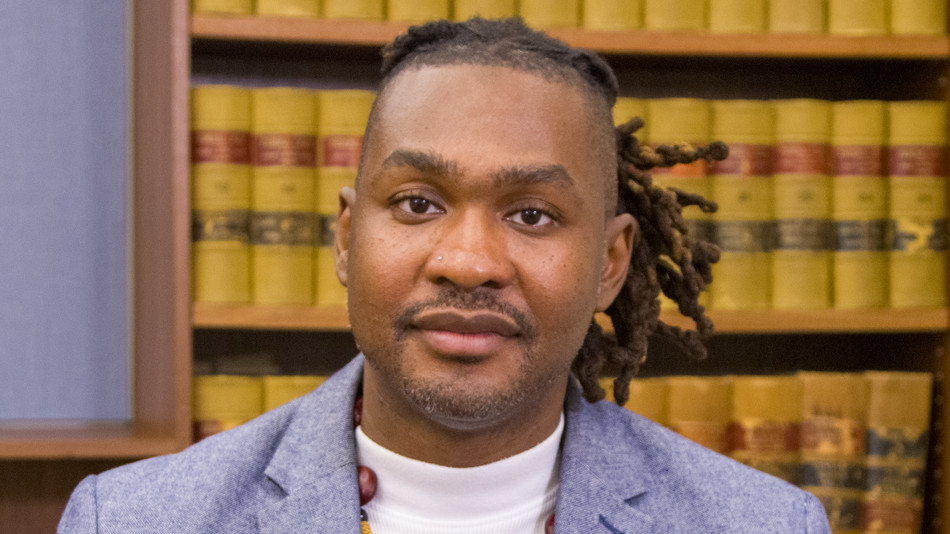
Share